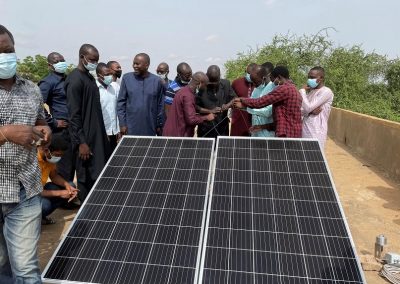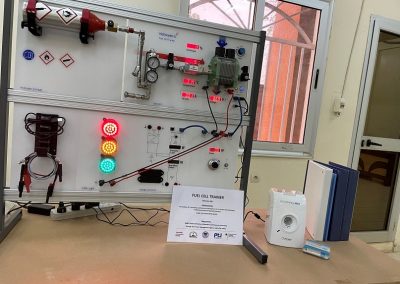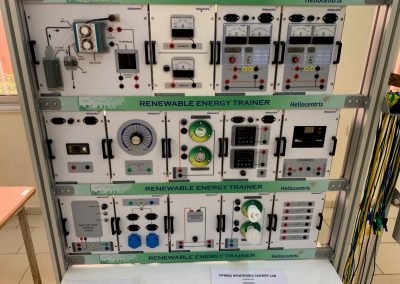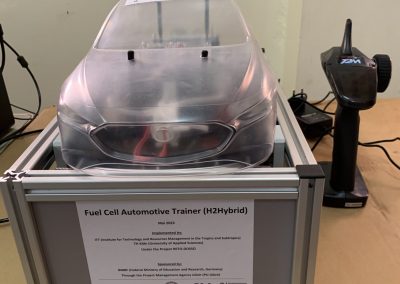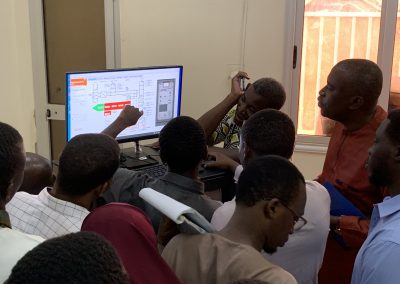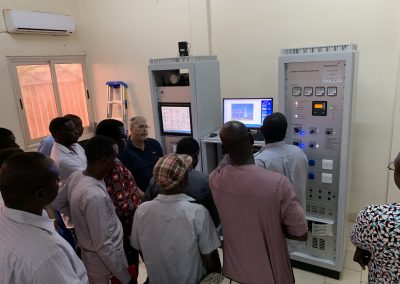Renewable Energy and Green Hydrogen Laboratory
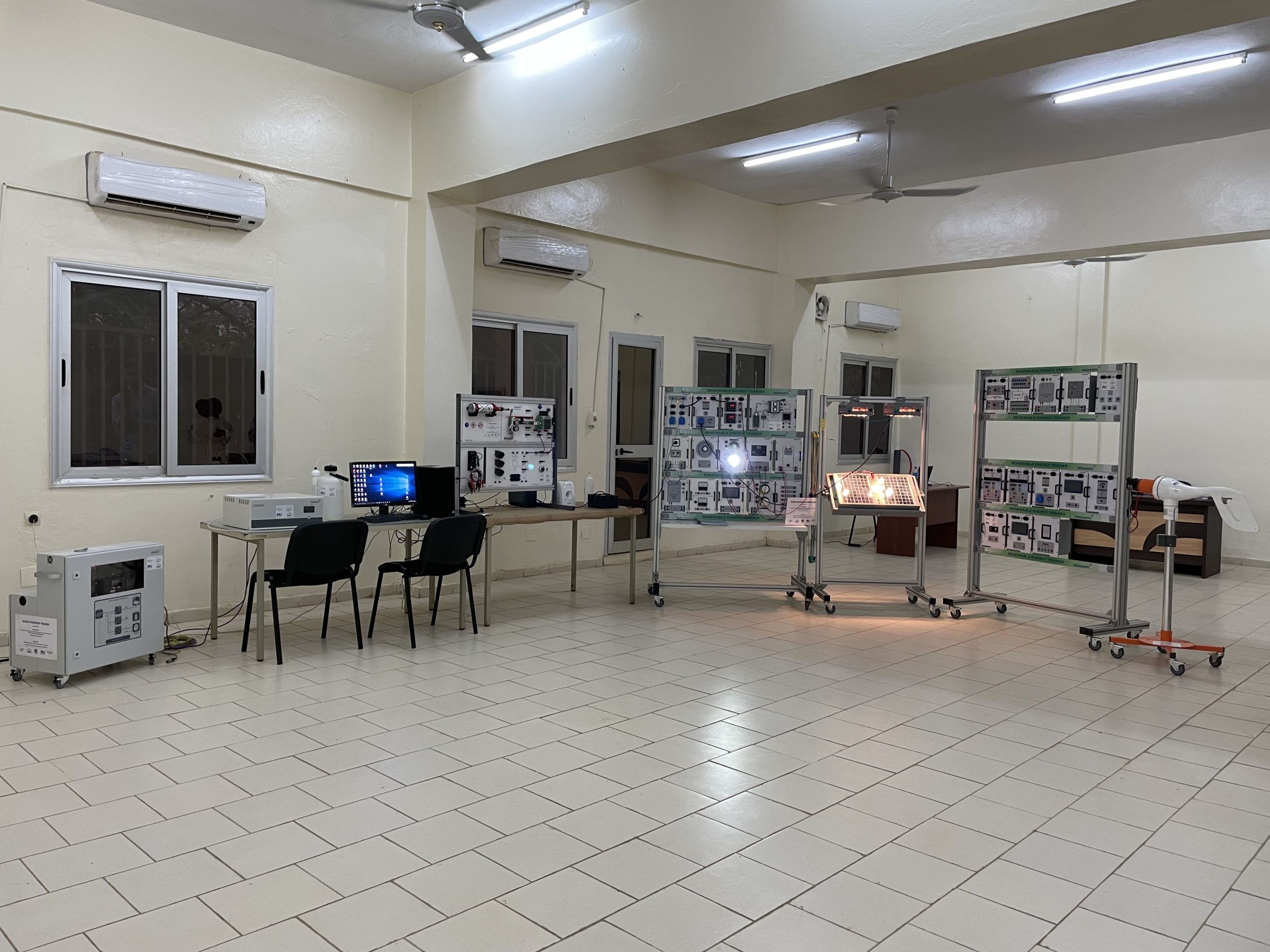
Due to the past and ongoing burning of fossils fuels and the emission of climate gases, humanity have to face several problems. Rising temperatures, changes in weather and so on are caused by this behavior. For reducing the emission of climate gases, renewable energies have to be stronger implemented into our energy generation. A further step is to use green hydrogen as a future energy carrier. For those purposes a new laboratory was found at the UAM in Niamey, Niger under the scope of the project RETO-DOSSO. The Renewable Energy and Green Hydrogen laboratory contains different test stands dealing with topics like solar energy, energy storage, generation, storage and usage of green hydrogen as well as the hybridization of those technologies. Students and researchers have the opportunity to strengthen their knowledge in these technologies.
The laboratory comprises six test stands: Hybrid Renewable Energy Trainer (HRET), Fuel Cell Trainer (FCT), Solar Hydrogen Trainer (SHT), Hybrid Energy Lab (HEL), Fuel Cell Car (FCAT) and New Energy Lab (NEL)
Hybrid Renewable Energy Trainer (HRET)
The HRET has various individual modules that can be interconnected. The large number of modules enables not only basic experiments, but also the investigation of real, operational problems such as shading of PV systems. In addition to the energy source, the test objects in the form of photovoltaics (PV), wind turbine and a fuel cell can be investigated by means of measuring and control units as well as by means of safety devices. For fuel cell operation, there is an external hydrogen generator and two metal hydride storage tanks.
Fuel Cell Trainer (FCT)
The FCT consists of a low-temperature fuel cell with a metal hydride storage. In addition, there is a variable electronic load, a load in the form of a traffic light, as well as a transformer to raise the output voltage of the fuel cell. All measurement data are displayed directly on the FCT by means of analogue displays. The FCT can be connected to a computer. The corresponding software can be used to record measurement data. In addition, the experiments can be carried out with or without computer support.
Solar Hydrogen Trainer (SHT)
The SHT is intended to explain the practical generation and application of solar energy. A functioning operating voltage is provided by two PV modules as well as integrated lead acid batteries. The hydrogen generator can be operated with both, the PV panels or the main supply. Thus, the SHT reflects the overall picture of a modern PV system, with the possibility of hydrogen production.
Hybrid Energy Lab (HEL)
The HEL shows the methods of storing energy in form of batteries and hydrogen. Both methods could be used individually or combined. The combination is called hybridization. It is possible to simulate the working principle of hybrid vehicles with the HEL. It also deepens the understanding of battery characteristics as well as charge and discharge behavior. The automatization of a hybrid energy storage system can also be trained.
Fuel Cell Car (FCAT)
The FCAT is a small remote controlled vehicle. It is powered by a battery and has in addition a small fuel cell mounted inside. When the battery is low, the fuel cell which is connected to two metal hydrid canisters, powers the battery as a range extender. The FCAT comes with a rolling test bench to measure some typical values related to a vehicles driving behavior.
New Energy Lab (NEL)
Last but not least the NEL is the biggest test stand in the Renewable Energy and Green Hydrogen Laboratory. It combines the functions of all previous test stands. The NEL contains of six solar PV panels, a wind turbine, a battery, a fuel cell, an electrolyser, an electronic load and an energy management system. All those components are connected to one big system, showing the whole variety of renewable energy generation, storage, transmission and usage. The NEL can serve as an uninterrrupted power supply and is able to simulate an island grid. By this, students and researchers can work on topics like providing remote areas with energy in a laboratory scale.
